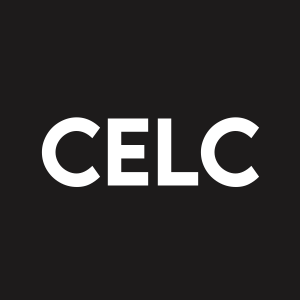Detailed Results from PIK3CA Wild-Type Cohort of Phase 3 VIKTORIA-1 Trial Presented at 2025 ESMO Congress Demonstrate Potential for Gedatolisib Regimens to be Practice Changing for Patients with HR+/HER2- Advanced Breast Cancer
Rhea-AI Summary
Celcuity (Nasdaq: CELC) presented detailed Phase 3 VIKTORIA-1 PIK3CA wild-type results at ESMO 2025 showing gedatolisib regimens substantially improved outcomes in HR+/HER2- advanced breast cancer after prior CDK4/6 and aromatase inhibitor therapy.
The gedatolisib triplet median PFS was 9.3 months vs 2.0 months (increment +7.3 months; HR=0.24; 95% CI 0.17-0.35; p<0.0001); the doublet median PFS was 7.4 vs 2.0 months (increment +5.4 months; HR=0.33; 95% CI 0.24-0.48; p<0.0001). ORR was 31.5% (triplet) and 28.3% (doublet) vs 1% control; median DOR 17.5 and 12.0 months.
Safety showed mostly low-grade TRAEs; discontinuation for TRAEs was 2.3% (triplet) and 3.1% (doublet). A rolling NDA is in progress with completion targeted in Q4 2025.
Positive
- Median PFS triplet +7.3 months (9.3 vs 2.0)
- Median PFS doublet +5.4 months (7.4 vs 2.0)
- Hazard ratio triplet HR=0.24 (95% CI 0.17-0.35)
- ORR triplet 31.5% vs 1% control
- Median DOR triplet 17.5 months; doublet 12.0 months
- Rolling NDA submission targeted for Q4 2025
Negative
- Grade 3 neutropenia 52.3% in gedatolisib triplet
- Grade 4 neutropenia 10.0% in gedatolisib triplet
- TRAEs caused study discontinuation 2.3%–3.1% across regimens
Insights
Phase 3 VIKTORIA-1 PIK3CA wild-type results show large, statistically significant PFS gains for gedatolisib regimens versus fulvestrant.
Gedatolisib regimens delivered substantial clinical activity in HR+/HER2- PIK3CA wild-type advanced breast cancer after CDK4/6 inhibitor exposure. The gedatolisib triplet achieved median PFS of
The clinical mechanism is comprehensive PAM pathway blockade, which produced deep and durable responses across subgroups. Safety was manageable; hyperglycemia occurred in
Key dependencies and risks include regulatory review of the rolling NDA (targeted completion
- Clinical benefit of the gedatolisib regimens was consistent across patient subgroups
- Hyperglycemia was reported in only
9.2% of patients treated with gedatolisib + palbociclib + fulvestrant (“gedatolisib triplet”) and in11.5% of patients treated with gedatolisib + fulvestrant (“gedatolisib doublet”) - Study treatment discontinuation due to treatment related adverse events was reported in
2.3% of patients treated with the gedatolisib triplet and3.1% of patients with the gedatolisib doublet - Management to host webcast and conference call October 20, 2025, at 8:00 a.m. ET
MINNEAPOLIS, Oct. 18, 2025 (GLOBE NEWSWIRE) -- Celcuity Inc. (Nasdaq: CELC), a clinical-stage biotechnology company pursuing development of targeted therapies for oncology, today announced detailed efficacy and safety results from the PIK3CA wild-type (“WT”) cohort of the Phase 3 VIKTORIA-1 clinical trial of gedatolisib, an investigational pan-PI3K/mTORC1/2 inhibitor, in adults with hormone receptor positive (“HR+”), human epidermal growth factor receptor 2 negative (“HER2-“), PIK3CA WT, advanced breast cancer (“ABC”), following progression on, or after, treatment with a CDK4/6 inhibitor and an aromatase inhibitor. As previously announced, the gedatolisib triplet demonstrated a statistically significant and clinically meaningful improvement in median progression-free survival (“PFS”) versus fulvestrant, reducing the risk of disease progression or death by
The detailed study results were presented at a late breaking oral presentation at the European Society for Medical Oncology (ESMO) Congress today, Saturday, October 18 at 4:25 a.m. ET/10:25 a.m. CEST.
In the trial, median PFS with the gedatolisib triplet was 9.3 months versus 2.0 months with fulvestrant, an incremental improvement of 7.3 months (HR=0.24;
The topline efficacy data from the VIKTORIA-1 PIK3CA WT cohort established several new milestones in the history of drug development for HR+/HER2- ABC:
- The hazard ratios for the gedatolisib triplet and doublet are more favorable than have ever been reported by any Phase 3 trial for patients with HR+/HER2- ABC.
- The 7.3- and 5.4-months incremental improvements in median PFS for the gedatolisib triplet and gedatolisib doublet over fulvestrant, respectively, are higher than have ever been reported by any Phase 3 trial for patients with HR+/HER2- ABC receiving at least their second line of an endocrine therapy-based regimen.
- Gedatolisib is the first inhibitor targeting the PI3K/AKT/mTOR (“PAM”) pathway to demonstrate positive Phase 3 results in patients with HR+/HER2-/PIK3CA WT ABC whose disease progressed on or after treatment with a CDK4/6 inhibitor.
- The median DOR and incremental ORR improvement relative to control for the gedatolisib triplet and doublet are the highest reported for an endocrine therapy-based regimen in 2L HR+/HER2- ABC.
The median PFS benefit of the gedatolisib triplet and doublet compared to fulvestrant was consistent across subgroups with the gedatolisib triplet showing higher clinical benefit in nearly all subgroups compared to the gedatolisib doublet, particularly for patients who were pre/perimenopausal, endocrine therapy resistant, or had visceral metastases. For patients enrolled in the United States and Canada, median PFS was 19.3 months (HR=0.13;
Sara Hurvitz, MD, Senior Vice President, Clinical Research Division, Fred Hutchinson Cancer Center, Smith Family Endowed Chair in Women’s Health, Professor and Head, Division of Hematology and Oncology, University of Washington, Department of Medicine and co-principal investigator for the trial, said: “VIKTORIA-1 is the first study to demonstrate a statistically significant and clinically meaningful improvement in median PFS with inhibition of the PI3K/AKT/mTOR pathway in patients with PIK3CA wild-type disease, all of whom previously received a CDK4/6 inhibitor. With these results, the gedatolisib regimens represent a new potential standard of care for patients with HR+, HER2-negative, PIK3CA wild-type advanced breast cancer whose disease progressed on or after treatment with a CDK4/6 inhibitor.”
The gedatolisib triplet and doublet were generally well tolerated in the trial with mostly low-grade treatment-related adverse events (“TRAEs”). The most common grade 3 TRAEs for the gedatolisib triplet, gedatolisib doublet, and fulvestrant groups included neutropenia (
Overall survival, a key secondary endpoint in VIKTORIA-1, while immature at the time of the analysis, with less than one-half of the required number of events having occurred, showed promising trends for both the gedatolisib triplet and doublet.
Igor Gorbatchevsky, MD, Chief Medical Officer of Celcuity, said: “We are very excited that treatment with gedatolisib combined with fulvestrant with or without palbociclib was well-tolerated by the VIKTORIA-1 patients and that only a few patients discontinued treatment due to an adverse event. This safety profile combined with the 7.3 and 5.4-months incremental improvement in median PFS relative to fulvestrant for the gedatolisib regimens, offer potentially paradigm shifting results for patients with HR-positive, HER2-negative, PIK3CA wild-type advanced breast cancer.”
Celcuity initiated a rolling New Drug Application (“NDA”) submission in conjunction with the U.S. Food and Drug Administration’s (“FDA”) Real-Time Oncology Review program, based on data from the PIK3CA wild-type cohort of the Phase 3 VIKTORIA-1 clinical trial. Completion of the NDA submission is targeted for the fourth quarter of 2025. The PIK3CA mutant cohort of the Phase 3 VIKTORIA-1 trial is
Webcast and Conference Call Information
The Celcuity management team will host a webcast/conference call on Monday, October 20, 2025, at 8:00 a.m. ET to discuss the additional results from the Phase 3 VIKTORIA-1 trial. Those who would like to participate may access the live webcast here or register in advance for the teleconference here. A replay of the webcast will be available on the Celcuity website following the live event.
Notes
HR+/HER2- Breast cancer
Breast cancer is the second most common cancer and one of the leading causes of cancer-related deaths worldwide.1 More than two million breast cancer cases were diagnosed globally in 2022.1 While survival rates are high for those diagnosed with early breast cancer, approximately
Three interconnected signaling pathways, estrogen, cyclin D1-CDK4/6, and PI3K/AKT/mTOR (PAM), are primary oncogenic drivers of HR+, HER2- breast cancer.3 Therapies inhibiting these pathways are approved and used in various combinations for advanced breast cancer. Currently approved inhibitors of the PAM pathway for breast cancer target a single PAM pathway component, such as PI3Kα, AKT, or mTORC1.4,5,6,7 However, resistance to CDK4/6 inhibitors and current endocrine therapies develops in many patients with advanced disease.8 Optimizing the inhibition of the PAM pathway is an active area of focus for breast cancer research.
VIKTORIA-1
VIKTORIA-1 is a Phase 3 open-label, randomized clinical trial to evaluate the efficacy and safety of gedatolisib in combination with fulvestrant with or without palbociclib in adults with HR+/HER2- ABC whose disease progressed on or after prior CDK4/6 therapy in combination with an aromatase inhibitor. The clinical trial is fully enrolled. The trial enrolled subjects regardless of PIK3CA status while enabling separate evaluation of subjects according to their PIK3CA status. Subjects who met eligibility criteria and did not have confirmed PI3KCA mutations (WT) were randomly assigned (1:1:1) to receive a regimen of either gedatolisib, palbociclib, and fulvestrant, gedatolisib and fulvestrant, or fulvestrant. Subjects who met eligibility criteria and had confirmed PI3KCA mutations (MT) were randomly assigned (3:3:1) to receive a regimen of either the gedatolisib triplet, alpelisib and fulvestrant, or the gedatolisib doublet.
Gedatolisib
Gedatolisib is an investigational, multi-target PAM inhibitor that potently targets all four class I PI3K isoforms, mTORC1, and mTORC2 to induce comprehensive blockade of the PAM pathway.9,10,11 As a multi-target PAM inhibitor, gedatolisib’s mechanism of action is highly differentiated from currently approved single-target inhibitors of the PAM pathway.11 Inhibition of only a single PAM component gives tumors an escape mechanism through cross-activation of the uninhibited targets. Gedatolisib’s comprehensive PAM pathway inhibition ensures full suppression of PAM activity by eliminating adaptive resistance cross-activation that occurs with single-target inhibitors. Unlike single-target inhibitors of the PAM pathway, gedatolisib has demonstrated equal potency and comparable cytotoxicity in PIK3CA-mutant and wild-type breast tumor cells in nonclinical studies and early clinical data.11,12
About Celcuity
Celcuity is a clinical-stage biotechnology company pursuing development of targeted therapies for treatment of multiple solid tumor indications. The company's lead therapeutic candidate is gedatolisib, a potent, pan-PI3K and mTORC1/2 inhibitor that comprehensively blockades the PAM pathway. Its mechanism of action and pharmacokinetic properties are differentiated from other currently approved and investigational therapies that target PI3Kα, AKT, or mTORC1 alone or together. A Phase 3 clinical trial, VIKTORIA-1, evaluating gedatolisib in combination with fulvestrant with or without palbociclib in patients with HR+/HER2- ABC has completed enrollment and reported topline data for the PIK3CA WT cohort and has completed enrollment of patients for the PIK3CA mutant cohort. A Phase 3 clinical trial, VIKTORIA-2, evaluating gedatolisib plus a CDK4/6 inhibitor and fulvestrant as first-line treatment for patients with HR+/HER2- ABC is currently enrolling patients. A Phase 1/2 clinical trial, CELC-G-201, evaluating gedatolisib in combination with darolutamide in patients with metastatic castration resistant prostate cancer, is ongoing. More detailed information about Celcuity’s active clinical trials can be found at ClinicalTrials.gov . Celcuity is headquartered in Minneapolis. Further information about Celcuity can be found at www.celcuity.com . Follow us on LinkedIn and X .
Forward-Looking Statements
This press release contains statements that constitute “forward-looking statements” within the meaning of the Private Securities Litigation Reform Act of 1995 including statements relating to the potential therapeutic benefits of gedatolisib; the size, design and timing of our clinical trials; our interpretation of topline clinical trial data; and other expectations with respect to gedatolisib. Words such as, but not limited to, “look forward to,” “believe,” “expect,” “anticipate,” “estimate,” “intend,” "confidence," "encouraged," “potential,” “plan,” “targets,” “likely,” “may,” “will,” “would,” “should” and “could,” and similar expressions or words identify forward-looking statements. The forward-looking statements included in this press release are based on management's current expectations and beliefs which are subject to a number of risks, uncertainties and factors, including that our topline results are based on a preliminary analysis of key efficacy and safety data, and such data may change following a more comprehensive review of the data related to the clinical trial; unforeseen delays in our clinical trials; and unanticipated developments that may impact the design of our clinical trials. In addition, all forward-looking statements are subject to other risks detailed in our Annual Report on Form 10-K for the year ended December 31, 2024, as such risks may be updated in our subsequent filings with the Securities and Exchange Commission. You are cautioned not to place undue reliance on these forward-looking statements, which speak only as of the date hereof. All forward-looking statements are qualified in their entirety by these cautionary statements, and we undertake no obligation to revise or update this press release to reflect events or circumstances after the date hereof.
References:
1. Sung H, et al. Global Cancer Statistics 2020: GLOBOCAN Estimates of Incidence and Mortality Worldwide for 36 Cancers in 185 Countries. CA Cancer J Clin. 2021;10.3322/caac.21660.
2. National Cancer Institute. Surveillance, Epidemiology and End Results Program (Accessed July 2025).
https://seer.cancer.gov/statfacts/html/breast-subtypes.html
3. Alves, C. L., & Ditzel, H. J. Drugging the PI3K/AKT/mTOR Pathway in ER+ Breast Cancer. Int J Mol Sci, 2023;24(5),4522. https://doi.org/10.3390/ijms24054522
4. United States Package Insert, US FDA, ITOVEBI
5. United States Package Insert, US FDA, PIQRAY
6. United States Package Insert, US FDA, TRUCAP
7. United States Package Insert, US FDA, AFINITOR
8. Lloyd M R, et al. Mechanisms of Resistance to CDK4/6 Blockade in Advanced Hormone Receptor-positive, HER2-negative Breast Cancer and Emerging Therapeutic Opportunities. Clin Cancer Res. 2022;28(5):821-30
9. Venkatesan, A. M., et al. Bis(morpholino-1,3,5-triazine) derivatives: potent adenosine 5'-triphosphate competitive phosphatidylinositol-3-kinase/mammalian target of rapamycin inhibitors: discovery of compound 26 (PKI-587), a highly efficacious dual inhibitor. J Med Chem, 2010;53(6), 2636-2645. https://doi.org/10.1021/jm901830p
10. Mallon, R., et al. Antitumor efficacy of PKI-587, a highly potent dual PI3K/mTOR kinase inhibitor. Clin Cancer Res, 2011;17(10), 3193-3203. https://doi.org/10.1158/1078-0432.CCR-10-1694
11. Rossetti, S., et al. Gedatolisib shows superior potency and efficacy versus single-node PI3K/AKT/mTOR inhibitors in breast cancer models. NPJ Breast Cancer, 2024;10(1), 40. https://doi.org/10.1038/s41523-024-00648-0
12. Layman, R., et al. Gedatolisib in combination with palbociclib and endocrine therapy in women with hormone receptor-positive, HER2-negative advanced breast cancer: results from the dose expansion groups of an open-label, phase 1b study. Lancet Oncol, 2024;25(4), 474-487. https://doi.org/10.1016/S1470-2045(24)00034-2
View source version of release on GlobeNewswire.com
Contacts:
Celcuity Inc.
Brian Sullivan, bsullivan@celcuity.com
Vicky Hahne, vhahne@celcuity.com
(763) 392-0123
ICR Healthcare
Patti Bank, patti.bank@icrhealthcare.com
(415) 513-1284








